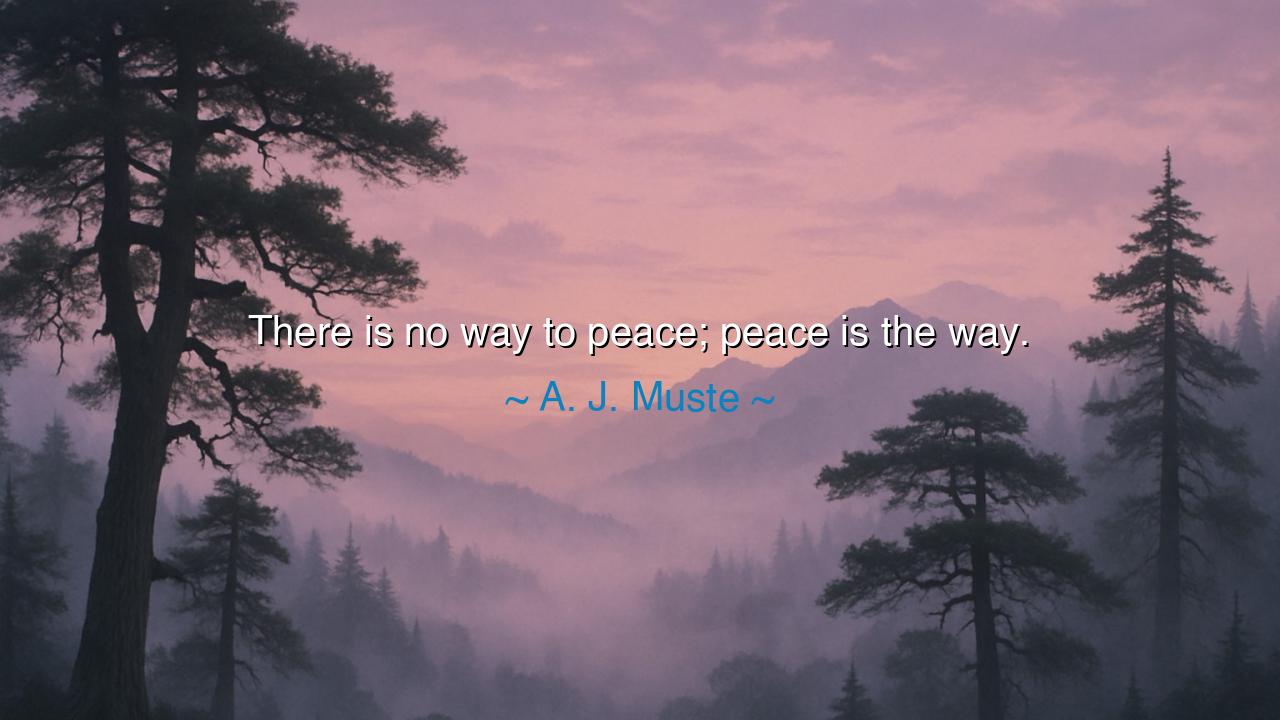
There is no way to peace; peace is the way.






The words of A. J. Muste — “There is no way to peace; peace is the way.” — strike with the force of a timeless riddle, yet within them lies a truth as radiant as the rising sun. They remind us that peace is not a distant land to be conquered, nor a prize at the end of a long and bloody road. It is itself the road. The path we walk shapes the destination we reach; if we sow violence, we reap destruction, but if we sow peace, then peace itself blossoms beneath our feet.
In these words, Muste echoes the wisdom of prophets and sages who have long taught that the ends can never be separated from the means. How often in history have leaders claimed they would wage war to win peace? Yet the ashes of war rarely yield harmony; they bring only new hatreds, new divisions, new struggles. The cycle repeats, for the seeds planted were poisoned from the start. Muste’s teaching is both a warning and a call: do not wait for peace to be given after conflict, for it is born only in the living of peace itself.
Consider the life of Mahatma Gandhi, whose nonviolent struggle against empire embodied this very truth. He did not say, “We must fight fiercely so that peace may come after victory.” Instead, he declared that the very methods of the struggle must reflect the desired end. To seek freedom through peaceful resistance was to make freedom already present in the act itself. Through marches, fasts, and words rather than bullets, he showed the world that peace is not a tool but the path itself — a force mightier than any sword.
In contrast, think of the countless rulers who have promised that conquest or domination would secure lasting harmony. From the Caesars of Rome to the generals of modern empires, all proclaimed that by subduing others, by enforcing silence, they would create peace. Yet their empires collapsed beneath rebellion and resentment. Their monuments crumbled, their banners faded, because they mistook suppression for serenity. True peace cannot be forced into existence by chains or weapons; it can only be lived into being.
This saying also speaks to the individual soul. For how many search restlessly, hoping that if they achieve enough, conquer enough, or accumulate enough, they will at last find inner peace? Yet the heart does not yield to violence, even if that violence is turned inward. To berate oneself, to demand serenity by force, is futile. Only by practicing gentleness toward oneself, by walking daily in the spirit of peace, can the inner harmony take root. It is not found in a final act, but in the way of living itself.
The lesson for generations is clear: you cannot separate the road from the destination. If you desire peace, then walk in peace now. Do not think it will come tomorrow if you justify anger today. Do not believe it will arrive through cruelty today with promises of kindness tomorrow. Every step either builds the world you seek or destroys it. To embrace Muste’s teaching is to take responsibility for each moment, to see that the future is hidden in the seeds we plant in the present.
In practice, let each listener begin where they are. If you wish for peace in the world, cultivate it in your speech, your actions, your relationships. Speak gently when tempted to wound. Reconcile quickly when division arises. Choose patience in the face of provocation. If nations cannot yet lay down their arms, then let individuals show the way, until their example becomes a tide that no ruler can resist. For the march to peace does not begin with treaties; it begins with the heart of each person who declares, “Peace is not my goal — it is my path.”
Thus the teaching of Muste endures: there is no road that leads to peace through anger, violence, or domination. The only way to arrive is to walk there already. To live in peace today is to make it possible tomorrow. And so, like the traveler who discovers that his destination was beneath his feet all along, let us awaken to the truth: the way and the goal are one, and that one is peace.






AAdministratorAdministrator
Welcome, honored guests. Please leave a comment, we will respond soon